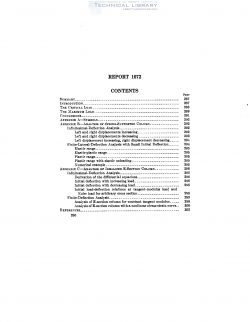naca-report-1072

- Version
- 160 Downloads
- 1.63 MB File Size
- 1 File Count
- September 7, 2016 Create Date
- September 7, 2016 Last Updated
National Advisory Committee for Aeronautics, Report - Inelastic Column Behavior

The significant findings of a theoretical study of column
behavior in the plastic stress mnge are presented. When the
beharior of a straight column is regarded as the limiting behavior
of an imperfect column as the initial imperfection (lack of
straightness) approaches zero, the departure from the straight
configuration occurs at the tangent-modulus load. Without such
a concept of the behavior of a straight column, one is led to the
unrealistic conclusion that lateral deflection of the column can
begin at any load between the tangent-modulus value and the
Euler load, based on the original elastic modulus.
The behavior of a column with tarnishing initial laclc of
straightness at loads beyond the tangent-modulus load depends
upon the stresswstrain curre for the material. A family of
(“INTER showing load against lateral deflection is presented for
idealized H-section columns of curious lengths and of carious
materials that hate a systematic mziation of their stress-strain
curves. These curses show that, for columns in which the
material stress-strain curves depart gradually from the initial
elastic slope as is characteristic of stainless steels, the maximum
column loads may be significantly above the tangent-anodulus
load. If the departure from the elastic cures is more abrupt,
such as for the high-strength aluminum or magnesium alloys,
the maximum load is only slightly above the tangent~modulus
load.
Until recently, the double-modulus theory had generally
been accepted as the correct theory of column failure in the
inelastic range of stress. This theory, originally developed
by Considére and Engesser and later extended by Von
Kérmén (see reference 1 for a discussion of this development),
predicts that the load at which bending starts and the maxi-
mum load that. a pin-ended column can support are the same
and can be obtained from the Euler equation.
| File | Action |
|---|---|
| naca-report-1072 Inelastic Column Behavior.pdf | Download |

Comment On This Post